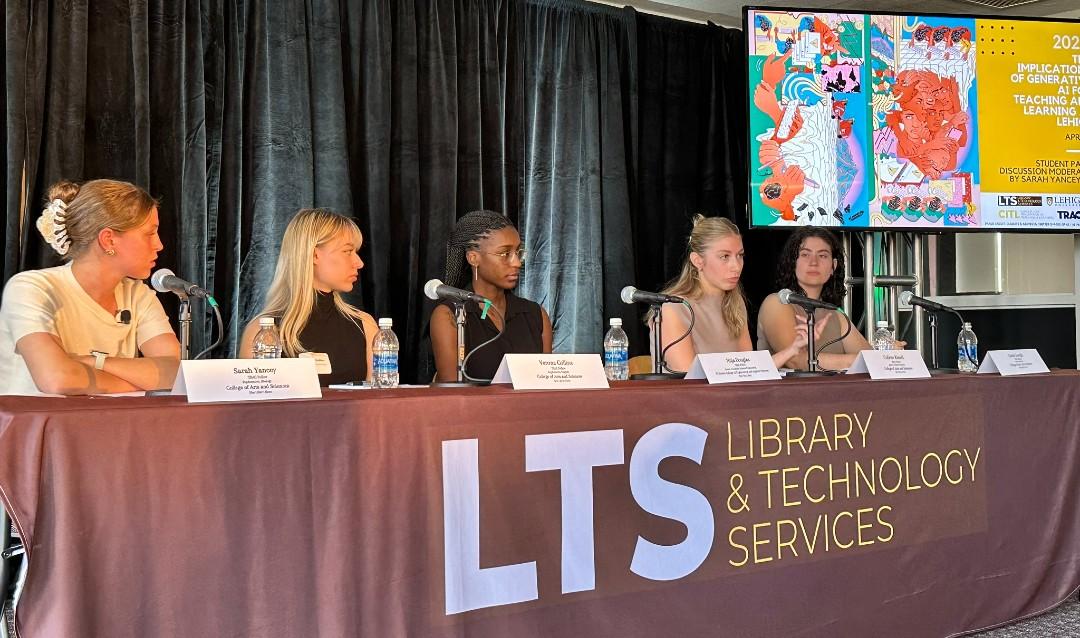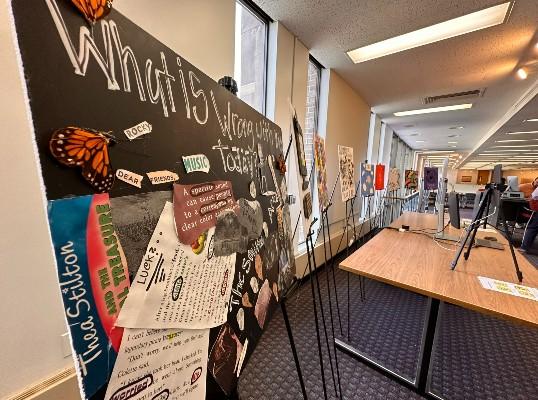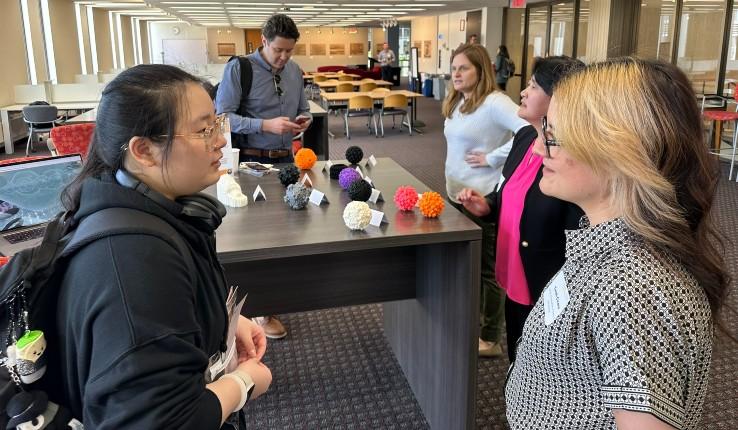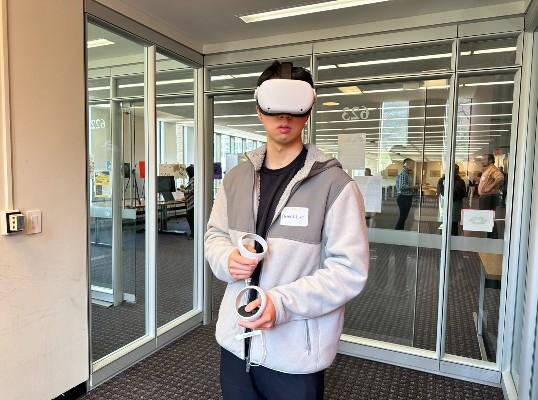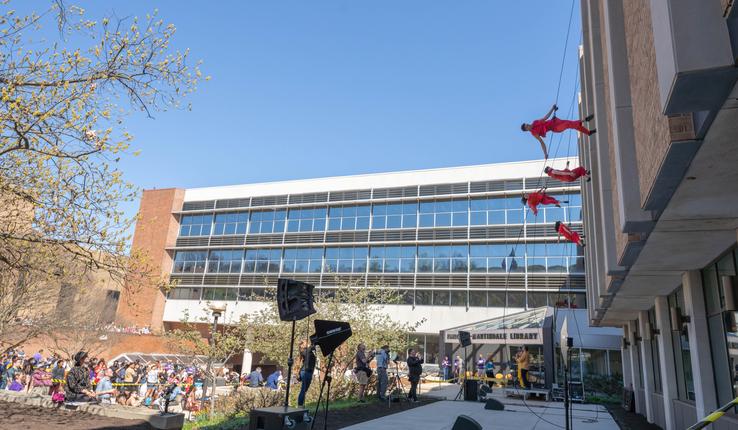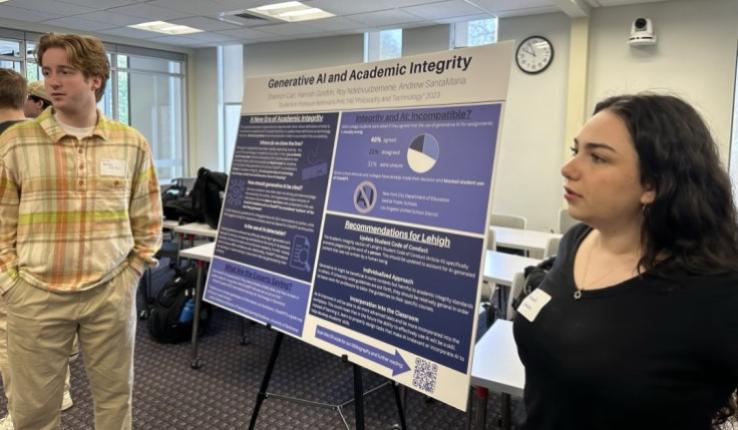Joseph said she thinks students will have a better understanding of generative AI if they read about the process co-authors took in publishing books that have been fully or partially written by AI. She cited an example from one of her classes where she said she read a book that was 60% written by AI and 40% by the co-author. At the end of the book there was a Q&A with the co-author describing the process and how specific his prompts needed to be for AI to generate what he wanted.
Douglas and Collette Kissell ’25, a political science major, both discussed the need for communication about generative AI among professors and students as the tools continue to evolve and become more a part of the classroom.
“It's not going away,” Kissel said. “I don't even know if there is a solution. But I would say that it requires open discourse…. It's not any one person's responsibility to handle AI, to find a solution to AI. It’s a collective effort from everyone involved.”
In another presentation, Haiyan Jia, assistant professor in the Department of Journalism and Communication, discussed one of the classes she is teaching, “Imagining a Future of AI and Us: Conceptual and Experiential Learning with AI. Joined by Carl Freyer ’25, she shared her collaboration goals in writing her proposal for the CITL Fellowship, which included a student-centric approach and a technology-integral focus. She also wanted the class to talk about “deeply human topics and societal issues.”
As part of the class, Jia had her students access ChatGPT and use it in mini projects that touched numerous topics, including ethics and creativity. One of the projects, in which they tested AI for its creative potential, was demonstrated by Freyer.
“A lot of the time in class when we were talking about AI and creativity, we always came back to the fact that humans were giving the AI the idea,” Freyer said.
He said he was able to demonstrate that was false, however, through a conversation he had with ChatGPT. He displayed the conversation, in which he directed ChatGPT to come up with images. ChatGPT showed it was developing its own ideas by following trends, much like humans, to generate the images.
“It's hard to just take away the label of creativity just because it's a machine,” Freyer said.
Jia said the class was a great learning experience.
“I love the fact that I was able to collaborate with CITL, but I also love the fact that I was able to learn about this together with my students,” Jia said. “We took such a humanistic and social scientific approach to address this technical situation that we're in and the conversation that we had as a class definitely was very enriching.”
The symposium wrapped up Wednesday morning with a faculty presentation from Michael O’Neill, language specialist in Lehigh’s International Center for Academic and Professional English, titled, “Using Microvideos to Introduce Your Course & Enhance Student Learning.”
O’Neill explained what microvideos are — a video on a single topic no longer than five minutes in length — why they can be a useful tool and showed how to use Panopto, a video recording platform, to create microvideos. He also demonstrated how he used Panopto in conjunction with Course Site.
O’Neill, with help from CITL, embedded quizzes in microvideos using Panopto, which also tracked who among his students had watched the video.
O’Neill shared an example of a microvideo he used for ENGL 003, Composition and Literature I for Multilingual Writers last fall. He also shared the reality of making microvideos, including the amount of time it takes to make them.
Read more stories on the Lehigh News Center.


